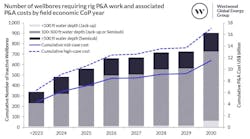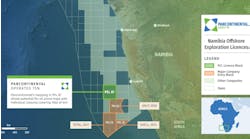Lundin assessing next-phase North Sea, Barents Sea drilling priorities
Offshore staff
STOCKHOLM, Sweden – Lundin Petroleum has issued an update on its E&P activities offshore Norway in its year-end report.
Results from a recent 4D seismic survey acquired over the Edvard Grieg field in the North Sea, as part of a reservoir monitoring program, suggest that the water injection flood front is farther away from the main production wells than predicted by the current reservoir models.
Later this year the company expects to sanction infill drilling on the field, starting in 2020.
In October, theGekko appraisal well was completed southeast of the Aker BP-operated Alvheim field in the same sector. This was a two-branch well designed to test potential for improved reservoir quality away from the Gekko discovery well location and to determine the thickness of the oil column.
Both branches encountered good-quality Heimdal sands with a 6-m (19.7-ft) oil rim below gas. Resources from Gekko have since been upgraded to 28-52 MMboe, and development options under review.
TheJohan Sverdrup Phase 1 process platform topsides sailed from the Samsung Heavy Industries yard in South Korea in December and should arrive at the Kværner Stord yard in western Norway in February.
Construction of the living quarter topsides at the Kværner yard has finished: both topsides are due to be installed at the platform complex this spring.
Pre-drilling operations for Phase 1 have finished ahead of schedule with eight pre-drilled producers and 12 water injectors completed. In December, tieback operations for the producers started on the drilling platform.
Latest capex estimate for Phase 1 is NOK86 billion ($10.1 billion), 30% below the NOK123 billion ($14.5 billion) in the plan submitted to Norway’s government in 2015. Production capacity will be 440 MMb/d.
Last month exploratory drilling got under way on the potential 768-MMbboe prospect Gjøkåsen Shallow in license PL857 in the southeastern Barents Sea. Gjøkåsen is a large, multiple-horizon structure which according to Lundin is remote from well control.
As the deeper reservoir targets offset the shallow targets, two wells are needed to fully test the prospect, so the Gjøkåsen Deep well will be drilled back-to-back with Gjøkåsen Shallow.
ThesemisubmersibleLeiv Eiriksson has started drilling the Pointer/Setter prospect in PL767, southeast of the Alta and Gohta discoveries in the southern Barents Sea. Pointer/Setter comprises two lower Cretaceous sandstone targets with potential combined resources of 312 MMboe.
Earlier this month Lundin announced that its Driva/Oppdal well in PL860 in the Mandal High area of the North Sea was dry. A second Mandal High area dual target well, Vinstra/Otta, will follow later this year on the adjacent PL539 license.
01/30/2019


